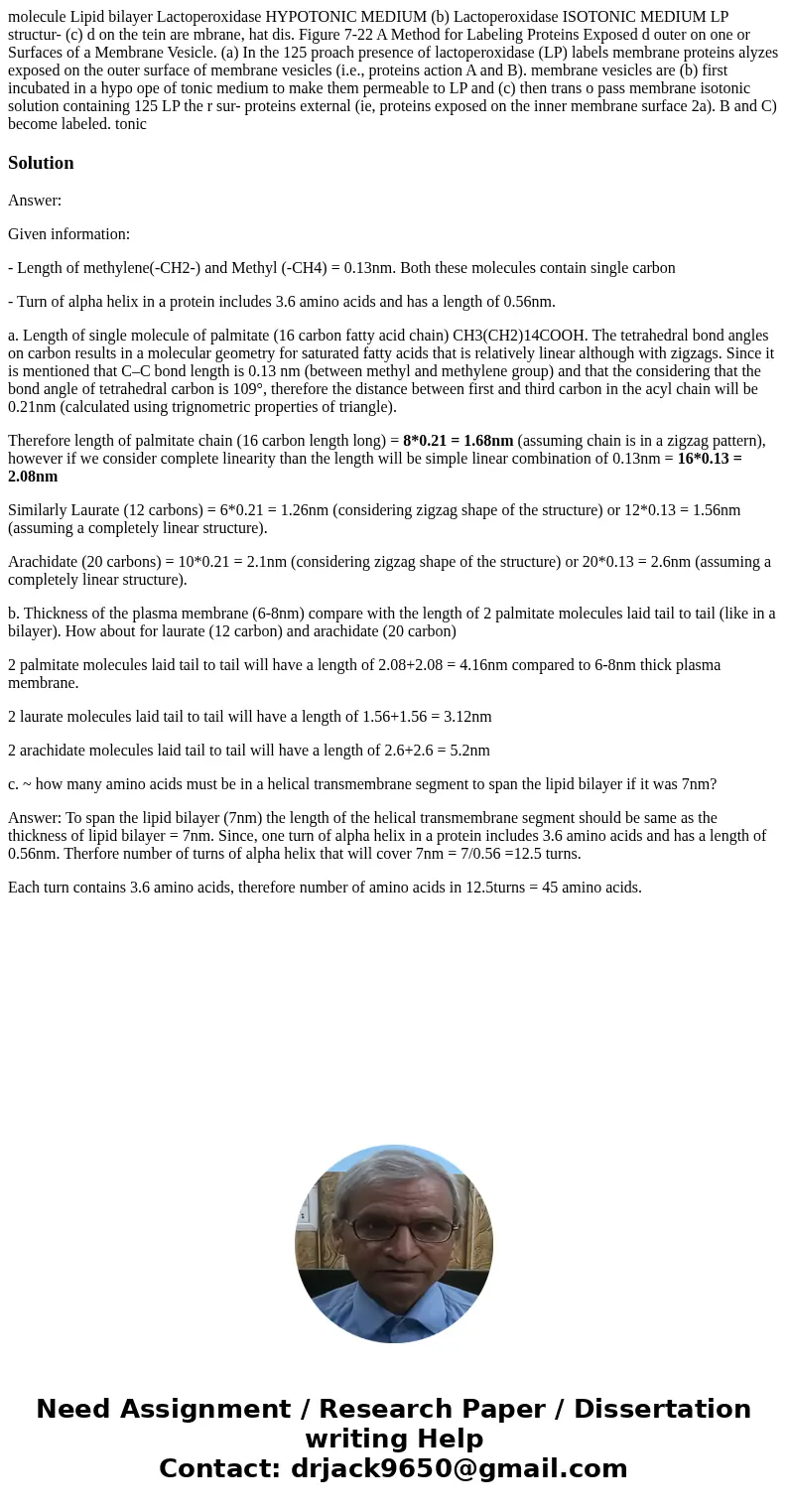molecule Lipid bilayer Lactoperoxidase HYPOTONIC MEDIUM b La
Solution
Answer:
Given information:
- Length of methylene(-CH2-) and Methyl (-CH4) = 0.13nm. Both these molecules contain single carbon
- Turn of alpha helix in a protein includes 3.6 amino acids and has a length of 0.56nm.
a. Length of single molecule of palmitate (16 carbon fatty acid chain) CH3(CH2)14COOH. The tetrahedral bond angles on carbon results in a molecular geometry for saturated fatty acids that is relatively linear although with zigzags. Since it is mentioned that C–C bond length is 0.13 nm (between methyl and methylene group) and that the considering that the bond angle of tetrahedral carbon is 109°, therefore the distance between first and third carbon in the acyl chain will be 0.21nm (calculated using trignometric properties of triangle).
Therefore length of palmitate chain (16 carbon length long) = 8*0.21 = 1.68nm (assuming chain is in a zigzag pattern), however if we consider complete linearity than the length will be simple linear combination of 0.13nm = 16*0.13 = 2.08nm
Similarly Laurate (12 carbons) = 6*0.21 = 1.26nm (considering zigzag shape of the structure) or 12*0.13 = 1.56nm (assuming a completely linear structure).
Arachidate (20 carbons) = 10*0.21 = 2.1nm (considering zigzag shape of the structure) or 20*0.13 = 2.6nm (assuming a completely linear structure).
b. Thickness of the plasma membrane (6-8nm) compare with the length of 2 palmitate molecules laid tail to tail (like in a bilayer). How about for laurate (12 carbon) and arachidate (20 carbon)
2 palmitate molecules laid tail to tail will have a length of 2.08+2.08 = 4.16nm compared to 6-8nm thick plasma membrane.
2 laurate molecules laid tail to tail will have a length of 1.56+1.56 = 3.12nm
2 arachidate molecules laid tail to tail will have a length of 2.6+2.6 = 5.2nm
c. ~ how many amino acids must be in a helical transmembrane segment to span the lipid bilayer if it was 7nm?
Answer: To span the lipid bilayer (7nm) the length of the helical transmembrane segment should be same as the thickness of lipid bilayer = 7nm. Since, one turn of alpha helix in a protein includes 3.6 amino acids and has a length of 0.56nm. Therfore number of turns of alpha helix that will cover 7nm = 7/0.56 =12.5 turns.
Each turn contains 3.6 amino acids, therefore number of amino acids in 12.5turns = 45 amino acids.

 Homework Sourse
Homework Sourse